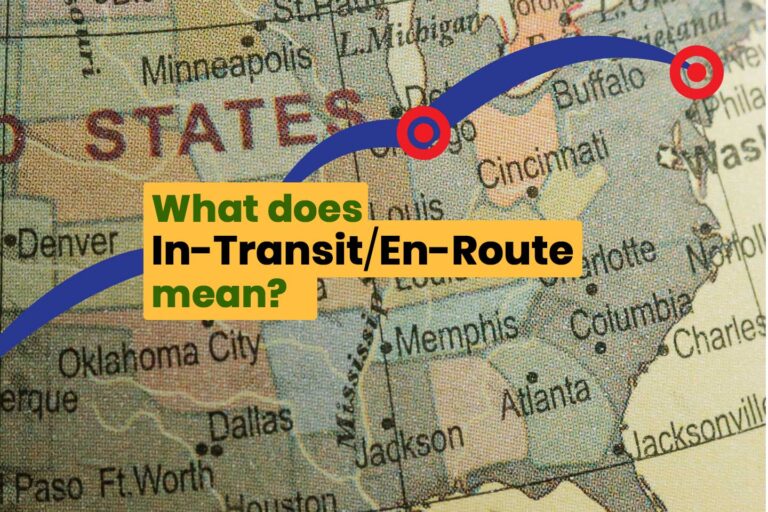This article is a part of a serie:
Ignite Loyalty: Post purchase customer journey explained
🗺️ Retailers guide to “In Transit” shipping status.
Let’s delve into the intricacies of the ‘In Transit’ phase in package delivery, a crucial part of the post-purchase customer journey. As your package moves through the carrier’s network from the warehouse to the local hub, customer engagement remains high. This article reveals the importance of this stage, where detailed tracking and updates can significantly bolster customer trust and interest.
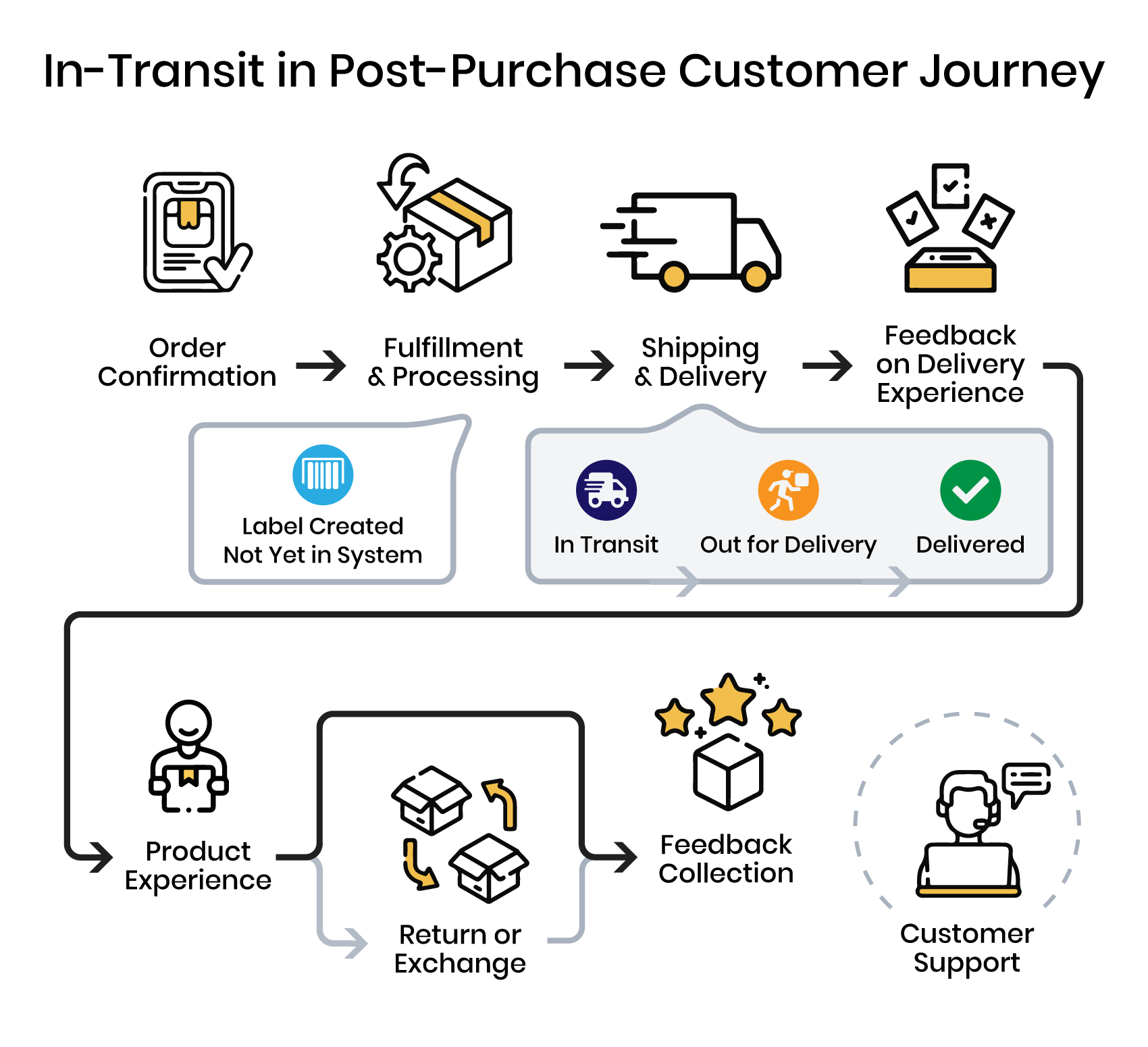
By leveraging advanced tools for consistent communication, retailers can enhance customer experience during this anticipatory phase. Read on to discover strategies for maximizing customer satisfaction and maintaining excitement right up to the moment of delivery.
What does “In Transit” mean?
“In Transit” means the package is on the move through the carrier’s logistics network between the retailer origin warehouse facility and the local delivery hub.
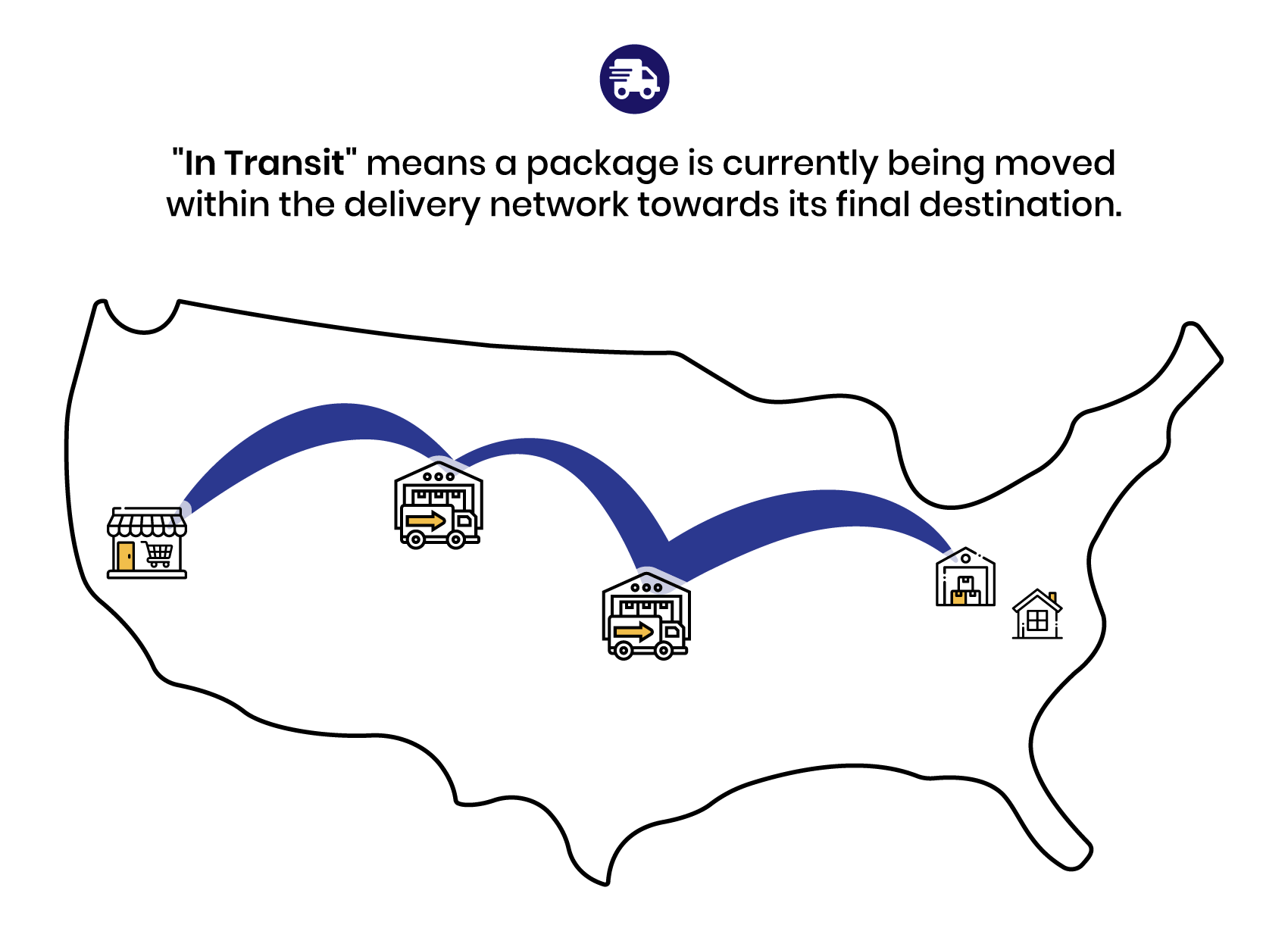
Behind the scenes, packages are typically transported via trucks or planes, passing through various sorting centers before reaching the local delivery hub.
This stage follows the “Shipping Confirmation,” notification sent to buyer signaling the package’s departure from the initial shipping location. During the “In Transit” phase, customer engagement is at 44%, with customers eager to track their package’s journey.
Retailers have an opportunity here. By providing detailed tracking and periodic updates, sending customers to personalized branded tracking page, they can maintain customer interest and trust. Enhanced visibility in this stage reassures customers their package is progressing towards delivery.
After “In Transit,” the package status updates to “Out for Delivery,” engaging 21% of customers. This final stage before the Delivery, while short, is marked by high anticipation. Retailers can capitalize on this by providing real-time updates, enhancing the excitement of the impending delivery.
🚀 Quick Tip: Leverage tools like WISMOlabs to offer consistent updates and insights during the “In Transit” stage, enhancing customer experience and satisfaction.
Additional Steps in the International Shipping Process: Navigating Customs, Cross-Border Transit, and Compliance
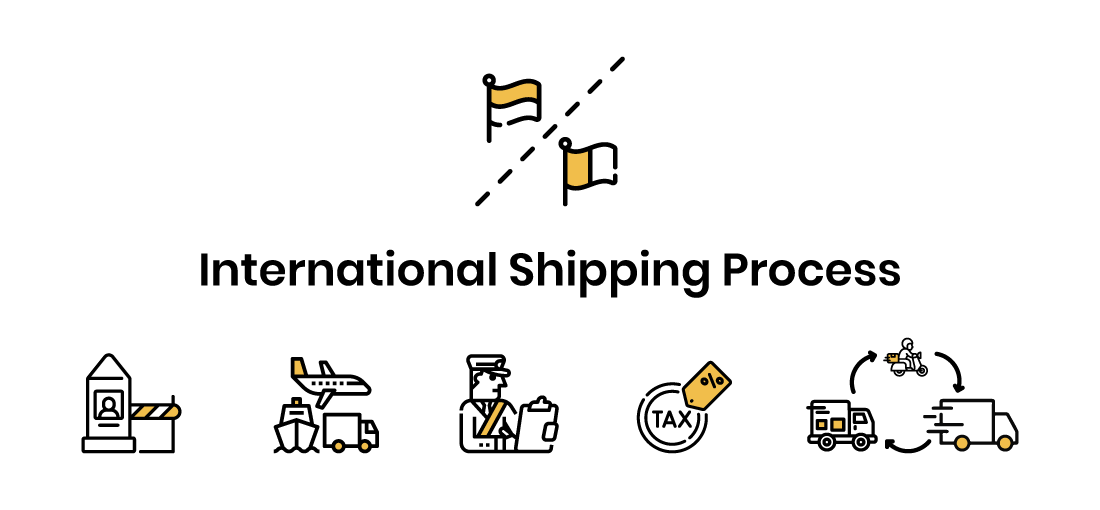
For international shipments marked as “In Transit,” there are additional steps and considerations include:
- International Transportation: The package may be transported by truck, via air or sea, depending on the distance and shipping options chosen. This phase can be longer than domestic transit due to the distances involved.
- Customs Clearance: International packages must pass through customs in both the country of origin and the destination country. This process involves inspection and verification to ensure the shipment complies with import and export regulations.
- Customs Delays: Packages can experience delays in customs. The duration of these delays depends on various factors like the volume of shipments being processed and the specifics of the items shipped.
- Duty and Taxes: Depending on the destination country’s laws, recipients might need to pay customs duties or taxes on the items received. These fees can impact the delivery timeline if payment is required upon receipt.
- Multiple Carriers: International shipments often involve multiple carriers. The package may be handed off from one courier to another, especially when transitioning between countries. This can lead to variability in tracking updates.
- Local Compliance: The package must adhere to local laws and regulations in the destination country. This might include restrictions on certain goods or specific labeling requirements.
- Delivery: Once the package clears customs and any required duties are paid, it proceeds to final delivery in the destination country, similar to domestic shipments.
International “In Transit” phases are typically longer and more complex due to these additional steps, and they require careful coordination and adherence to international shipping regulations.
What is the process once an item is marked as “In Transit” or “En-Route”?
The ‘In-Transit’ phase is a dynamic part of the delivery journey where your package makes its way from the retailer to your doorstep. Let’s break down this process:
- Carrier Pickup: The journey begins when the carrier picks up the package, marked by the ‘Label Created’ status.
- Initial Sorting: At a regional hub, the package is sorted based on its destination.
- Transportation: The package travels, possibly through multiple hubs, getting closer to the destination.
- Intermediate Sorting and Processing: Each hub processes the package, which might involve various transportation modes.
- Arrival at Local Facility: The package reaches a local delivery hub near you at which point items is being prepared for the next stage, which is “Out for Delivery“.
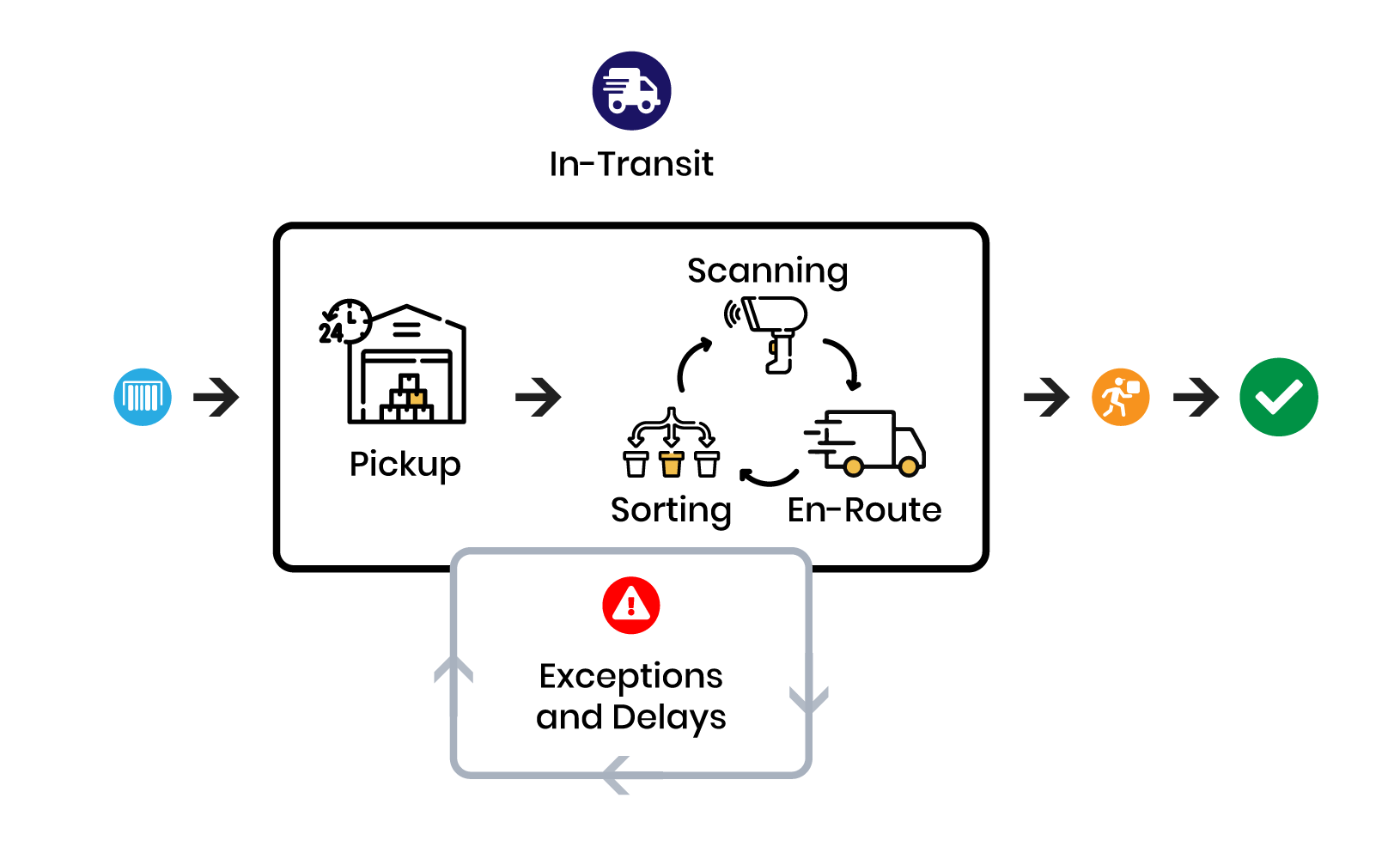
Throughout these stages, retailers can enhance the customer experience by offering detailed tracking and updates, ensuring that customers stay informed and engaged until their package changes status to ‘Out for Delivery.’
Overcoming Obstacles: The Challenges of the In-Transit Phase in Order Delivery
Typical challenges during the In-Transit phase of order delivery may include a variety of factors that can affect the timely and smooth progression of a shipment. This critical stage, where a package is on its way to the recipient, is often subject to unforeseen circumstances and logistical complexities. From unexpected delays due to weather or transportation issues to navigating the intricate procedures of customs clearance for international orders, each step in this phase presents its own set of potential hurdles. Understanding these challenges is essential for both retailers and consumers to set realistic expectations and efficiently address any issues that may arise. In this section, we’ll explore some of the common obstacles encountered during the In-Transit phase and provide insights into effectively managing them.

In such cases, clear communication about the cause of the delay, expected time of resolution, and proactive management of customer expectations can make a significant difference. By addressing these challenges head-on and offering solutions or alternatives, retailers can turn potential frustrations into opportunities for demonstrating exceptional customer service.
This approach ensures that even when the journey encounters hiccups, customer trust and satisfaction remain high, right up to the moment the package is marked ‘Out for Delivery.’
Why is package in transit for so long?
Packages can be in transit for extended periods due to various reasons:
- Logistical Challenges: Issues with transportation, such as vehicle breakdowns or limited availability.
- Route Length: Longer routes naturally take more time, especially for international shipping.
- Weather Conditions: Adverse weather can delay transportation.
- High Volume: During peak periods like holidays, delivery systems can get overloaded.
Why do packages get stuck in transit?
Reasons for packages getting stuck in transit include:
- Lost or Misplaced: Packages can sometimes be misplaced at sorting facilities.
- Label Damage: If the shipping label gets damaged, it can delay sorting and routing.
- Carrier Issues: Problems within the carrier’s network, such as strikes or staffing issues.
- Customs Delays: For international shipments customs can significantly delay progress.
Why hasn’t package moved in 3 or more days?
When there’s no update on the shipment information for three days or more, it might be due to:
- Technical Issues with Carrier API: The package is progressing, but updates aren’t being transmitted due to technical glitches in the carrier’s tracking system.
- Missed Scanning: During long transit legs, the package might not get scanned, leading to a lack of updates. It’s likely to be updated once it reaches the next checkpoint.
- Weekends and Holidays: No movement or updates occur during non-business days.
In most instances, the absence of tracking updates for few of days doesn’t necessarily mean that the package is lost or experiencing a delay. It’s often the case that the package is still en route to its destination. This situation usually resolves itself when the shipment arrives at the next point on its route and is scanned. While this can be an early sign of potential issues in the delivery process, it is often a temporary lapse in tracking updates. It’s recommended to continue monitoring the situation, and if the status remains unchanged for an extended period, reaching out to the carrier for clarification can be helpful..
How long does “in transit” take before reaching the final destination? How long will a package be in transit?
The duration of a package’s ‘in transit’ status, leading up to its arrival at the final destination, is influenced by a variety of factors. These include whether the shipment is domestic or international, the type of shipping service selected (including economy services that may involve multiple carriers), seasonal fluctuations, the total distance the package must traverse, and additional logistical considerations.
Domestic Shipments
- Standard Shipping: Typically 2-5 business days.
- Expedited Shipping: 1-3 business days.
- Same-Day or Next-Day Delivery: Within 24 hours for eligible areas.
Rural areas of delivery might take extra time.
International Shipments
- Standard International Shipping: Generally takes 7-21 days, but can vary greatly depending on the countries involved and the shipping service.
- Expedited International Shipping: Can reduce the transit time to 3-7 days, depending on the service provider and specific routes.
Factors Affecting Transit Time
- Distance: Longer distances, especially international routes, take more time.
- Customs Processing: For international shipments, customs clearance can add significant delays.
- Shipping Method: Air freight is faster than ground or sea shipping.
- Carrier Efficiency: Different carriers have varying transit times based on their logistics network and efficiency.
- Time of the Year: During peak seasons like holidays, transit times can be longer due to higher volume of shipments.
- Origin and Destination Points: Shipments to or from remote areas might take longer compared to major urban centers.
Note: These are estimated times and can be influenced by external factors like weather conditions, logistics disruptions, and regulatory changes. It’s important for both senders and recipients to monitor the tracking information provided by the carrier for the most accurate and updated information regarding the transit status.
Does in transit mean my package is moving?
“In transit” generally means the package is moving or is in the process of being transported. However, it can also be in a stationary state at a sorting facility.
Is transit time the same as delivery time?
Transit time refers to the period a package is in the shipping process, from the sender to the recipient. Delivery time includes the entire process from order placement to final delivery, which encompasses processing time, transit time, and any delays. Therefore, transit time is a subset of the total delivery time.
In the journey of a package from sender to recipient, the transition from “In Transit” to “Out for Delivery” marks a crucial stage. The “In Transit” status indicates that the package is moving through the carrier’s delivery network, while “Out for Delivery” signifies that it has reached the final delivery station and is on the vehicle for delivery to the recipient. It’s important to note that sometimes, especially in cases of expedited or efficient delivery systems, carriers may update the status directly to “Delivered,” bypassing the “Out for Delivery” stage. This section explores the nuances between these statuses and what they mean for the delivery timeline.
What are the differences between “in transit” and “out for delivery”?
The statuses “In Transit” or “En-Route” and “Out for Delivery” are key indicators of a package’s progression in the shipping process, each representing a distinct phase. “In Transit” signifies an earlier stage, where the package is actively moving through the carrier’s network, possibly between different facilities or sorting centers. Following this, “Out for Delivery” indicates a subsequent phase where the package has reached the local delivery office nearest to its final destination and is on the vehicle for delivery. Understanding this sequence helps in accurately tracking a package’s journey from sender to recipient.
| Status | Description |
|---|---|
| In Transit | The package is being transported within the carrier’s network. It could be en route between facilities or at a sorting center. |
| Out for Delivery | The package has arrived at the local delivery office near its destination and is on the vehicle for delivery to the recipient’s address. |
What does in transit mean before out for delivery?
“In Transit” before “Out for Delivery” means that the package is still within the carrier’s logistical network, either on its way to or at a sorting facility nearest to the recipient. It has not yet been loaded onto the delivery vehicle.
What does in transit mean compared to out for delivery?
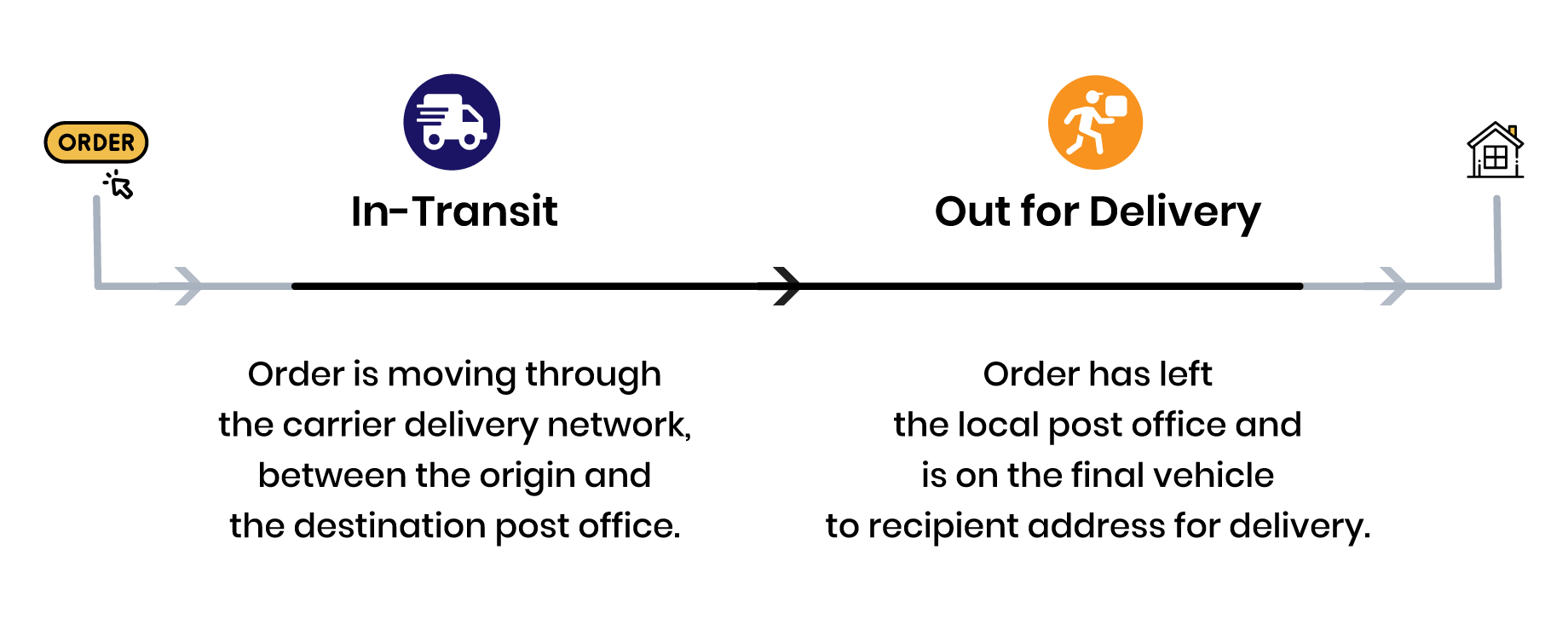
- In Transit: The package is under the process of shipment, potentially between different cities or regions.
- Out for Delivery: The package has completed its journey through the larger network and is now on a local vehicle, actively heading towards the recipient’s address.
Will my package be delivered today if it says in transit / Does in transit mean it will arrive and be delivered today?
The status “In Transit” indicates that a package is either on the move within the carrier’s network or being processed at a facility, but it does not definitively mean that it will arrive today. Unlike the “Out for Delivery” status, which suggests imminent delivery, “In Transit” reflects an earlier stage in the shipping process.
It’s important to note that the standard shipping progression of “Label created ➡ In Transit ➡ Out for Delivery ➡ Delivered” isn’t always strictly followed. In some cases, packages may be marked as “Delivered” without the “Out for Delivery” status being explicitly indicated.
If an estimated time of arrival (ETA) is provided and it falls on the current day, there’s a higher likelihood that the package will be delivered today. Additionally, the current location of the package can offer clues about its delivery timeline.
With WISMOlabs branded tracking pages, customers can access a detailed map showing the real-time location of their package, providing a clearer picture of when to expect delivery.
This article is a part of a serie:
Ignite Loyalty: Post purchase customer journey explained
FAQ: Understanding the “In Transit” Phase
Let’s addresses common questions and concerns, providing concise yet comprehensive answers.
What Does “In Transit” Mean?
“In Transit” indicates that the package is being moved through the carrier’s logistics network. It may be en route between facilities or at a sorting center.
How Long Can a Package Stay “In Transit”?
The duration of the “In Transit” phase varies and depends on factors like shipping method, distance, and whether the shipment is domestic or international. Domestic shipments usually take 2-5 business days, while international shipments can take 7-21 days or more.
What Causes Delays in the “In Transit” Phase?
Delays can be caused by logistical challenges, route length, customs clearance for international shipments, weather conditions, and high shipping volumes, especially during holidays. Keep your customers informed with WISMOlabs shipping notifications to lower WISMO calls.
Can the “In Transit” Status Update Directly to “Delivered”?
Yes, sometimes carriers may update the status to “Delivered” bypassing the “Out for Delivery” stage, particularly in cases of expedited or efficient delivery systems.
If My Package is “In Transit” for Several Days Without Updates, Should I Be Concerned?
While a lack of updates for a few days doesn’t necessarily indicate a problem, it is advisable to monitor the situation. Delays in updates can occur due to missed scanning or technical issues with the carrier’s tracking system.
Is “In Transit” the Same as “Out for Delivery”?
No, “In Transit” means the package is still moving within the carrier’s network or being processed at a facility, whereas “Out for Delivery” means it is on the final vehicle headed to the recipient’s address.
Does “In Transit” Mean My Package is Moving?
Generally, “In Transit” means the package is either moving or being processed for transport. However, it might also be temporarily stationary at a sorting facility.
What Should Retailers Know About the “In Transit” Phase?
Retailers should provide detailed tracking and periodic updates to maintain customer interest and trust. Enhanced visibility during this stage reassures customers about the progress of their package.
